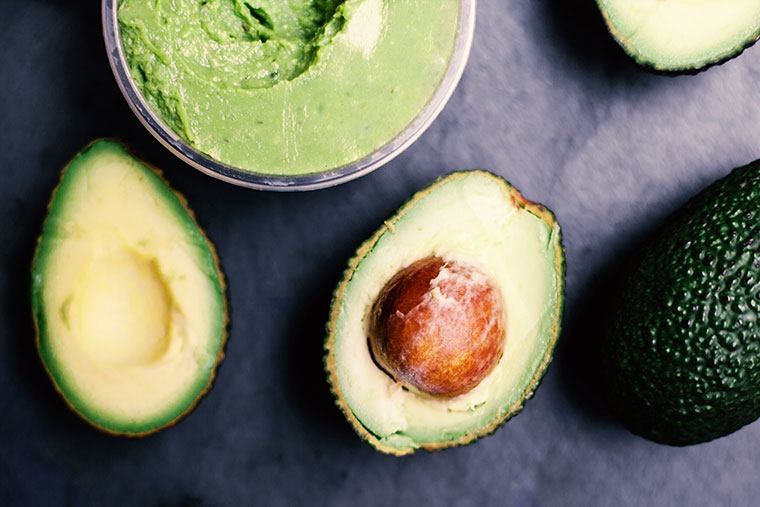I’m a Health Writer—but My Low-Fat Diet Was Total Crap
By trade, I’m a health writer who covers the latest wellness research and advice, straight from the world’s top experts. I can tell you the exact nutritional breakdown of a banana, or list all the reasons why diet soda is so bad for you. With that wealth of knowledge, you’d think I’d have my own eating habits all figured out, right?
Well, not exactly. When I started working for a women’s fitness magazine four years ago, sure, I was pretty healthy: I ran half-marathons and sweated through the buzziest boutique fitness classes, and I was all for green smoothies and avocado toast. But the bulk of my diet was a disaster.
Sure, I lost a couple pounds post-college, thanks to a newfound love of running, but I never really felt great. I just couldn’t figure out what the heck I was doing wrong
All of it centered on low-fat, “light” foods. A typical day went something like this: I’d have fat-free yogurt with cereal for breakfast, along with artificially sweetened coffee; a wimpy chopped salad for lunch; and what I thought was a “healthy” homemade dinner (usually pasta and a protein). Oh, and then there were the snacks: granola bars, baked chips, 100-calorie packs, or the occasional cupcake or cookie that were always lurking in the office. Plus, I was eating out all the time, and at restaurants any “rules” went out the window.
Sure, I lost a couple pounds post-college, thanks to a newfound love of running, but I never really felt great. I just couldn’t figure out what the heck I was doing wrong.
I wasn’t the only person feeling frustrated when the low-fat strategy failed.

“During the late 1990s and early 2000s, typical diet advice placed a lot of emphasis on eliminating fat in order to lose weight,” says Keri Gans, MS, RDN, CDN, nutritionist and author of The Small Change Diet. “Unfortunately, many women reached for foods with limited fat and found themselves hungry all the time.” (Raises hand.)

{{post.sponsorText}}
Darya Rose, Ph.D., author of Foodist and creator of Summer Tomato, experienced a similar situation: “The way I—and the women I knew—interpreted the dieting advice of that era was, as long as it's fat-free you can have as much of it as you like,” she recalls. “Binge on frozen yogurt? Don’t mind if I do.”
"The way I interpreted the dieting advice of that era was, as long as it's fat-free you can have as much of it as you like"
The problem with that way of eating: “It was misleading because it asked us to focus on a single macronutrient—fat—rather than on real food and our dietary patterns as a whole,” Rose explains. And fat plays a super-important role in your diet. Without it, you're literally depriving your system of essential nutrients, she says. “Our bodies know this, and it's therefore not surprising that fats are also essential for satiation.”
In other words, those wimpy salads and fat-free yogurts didn’t help me feel full; they were doing the opposite, simply setting me up to feel hungry.

It took a few years for it to fully dawn on me, but finally, in my late 20s, I’ve swallowed the once-bitter pill that fats are our friend—and those carb- and sugar-filled “low-fat” foods are the enemy. It helps that I’m a health writer, and healthy fats are now being praised by nutrition experts and researchers alike.
Now I make room in my diet for foods I’d once considered off-limits: nut butters, coconut oil, olive oil, avocado, fatty fish, and even red meat on occasion. I order scrambled eggs, not egg whites, at brunch, and sometimes a side of bacon or sausage. I always add healthy fats like nuts or goat cheese to my salads. I skip non-fat bottled dressing in favor of a homemade vinaigrette. Most of all, I’ve learned to avoid the allure of processed foods’ false promises and focus on whole foods that make me feel good.
A major turning point came earlier this year when I did the Whole30. (It’s a month-long program that banishes grains, dairy, sugar, alcohol, and all processed foods.) While I wouldn’t stick to such a restrictive plan in the long run (come on, live a little!), I did find that my digestive issues, hunger levels, and even my mood improved eating this way.
“A well-balanced, non-restrictive diet always wins in the end"
If you’re struggling to readjust your diet mentality, Rose suggests that as a starting point, find some real (read: unprocessed) foods you enjoy and help you feel satisfied. “Focus on your biggest patterns of eating, rather than stressing out over the details," she explains. "Then add more as you build the skills and expand your palate.”
The best part? It’s not that hard to eat this way. When I focus on eating whole foods, cutting back on empty carbs and processed snacks just naturally happens—along with major improvements in my health and happiness.
Gans agrees: “A well-balanced, non-restrictive diet always wins in the end,” she says. In retrospect, I suppose it’s essentially a return to my younger years—when I ate simple, straightforward meals when I was hungry. (Thanks, mom!) Since it's part of my job, I'll probably always think about food and nutrition more than I did as a kid. But when I focus on how a food is going to make me feel, instead of how many grams of fat it contains, an amazing thing happens: I simply feel better. —Locke Hughes
Healthy fats isn't the only buzzword you should know in 2017: These are the items that will be trending at Whole Foods this year. Wondering if your eating habits match everyone else's? Google offers up some insight.
Loading More Posts...